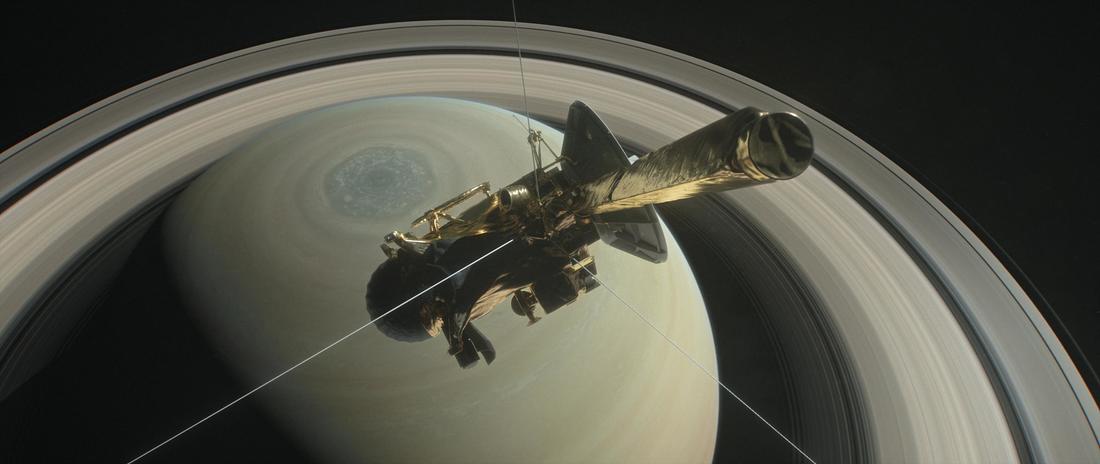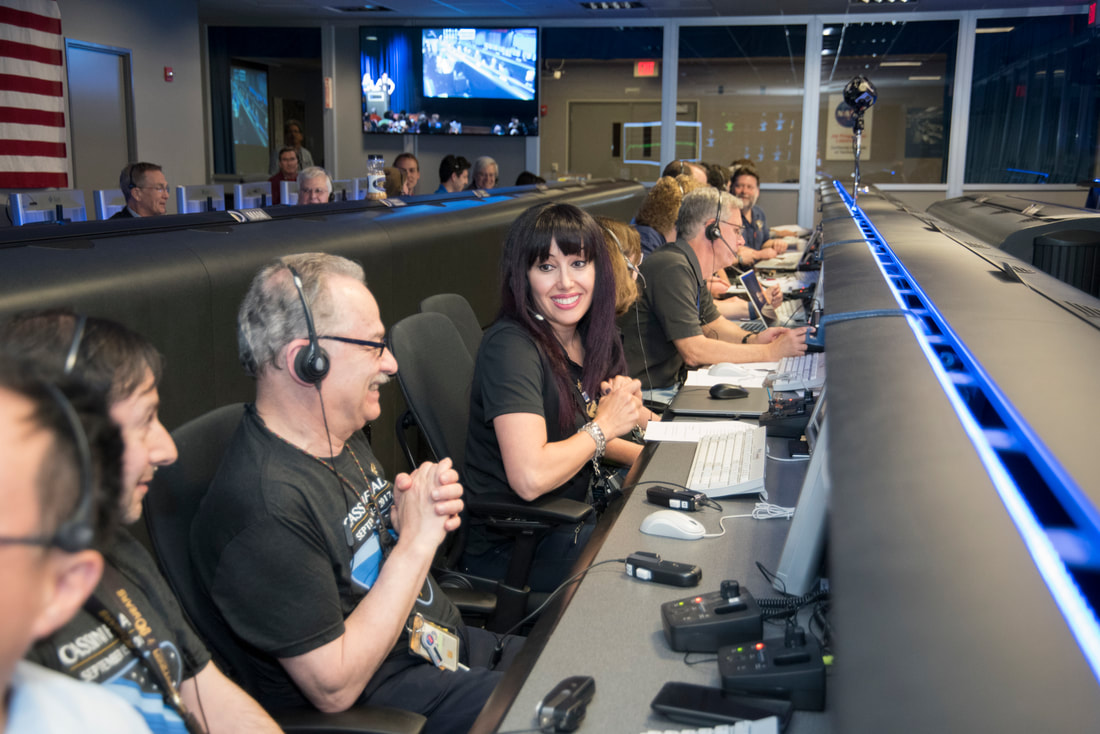|
Answers provided by Terri Randall, Writer/Producer/Director of "Death Dive to Saturn"
What inspired this story?
Terri Randall: Cassini’s final moments inspired the story. The Cassini Mission to Saturn, one of the most successful missions in NASA’s history, was coming to an end. NOVA made a commitment to document the extraordinary discoveries the team made, as well as capture the spacecraft’s fiery end. Describe some of the challenges faced while making this film? TR: Telling a story about space exploration is always exciting but also challenging—you can’t shoot on location! Although the Cassini Mission produced thousands of stunning images we wanted to develop ways to make the solar system more tangible. In one scene we combined live action with animation to bring a lake on Saturn’s moon Titan to life. It was also a challenge to tell the story of such a long and successful mission: what discoveries to include, which stories will resonate with the audience? Instead of trying to tell the story chronologically we broke it into three acts-- the story of the planet, the story of Saturn’s moons and the story of Saturn’s rings. A logistical challenge was documenting the mission’s end. It happened in the middle of the night and the team (about a thousand team members were there) was split between two locations. Figuring out the best way to cover it was a challenging experience. How do you approach science storytelling? TR: I don’t come from a science background and while it takes me time to research and understand a subject, once I do, I think I have an intuitive sense of how to share what I’ve learned with the audience. It’s too easy to get lost in scientific information so I try to keep the science as simple and accessible as possible and always keep in mind that I’m telling a story with a beginning, middle and an end, to always keep the arc of the story in mind and not get lost in the details. What impact do you hope this film will have? TR: I hope the film will be used for years to come to convey the enormous accomplishments of this mission-- an evergreen of the mission’s discoveries. Were there any surprising or meaningful moments/experiences you want to share? TR: The way the scientists talked about the spacecraft was truly endearing. After 20 years it had become a good friend. Having the opportunity to witness its demise with the team was an extraordinary experience. There were many tears. Anything else you would like people to know? TR: I really enjoyed working with the team, scientists who explore space, trying to answer some of our biggest scientific mysteries, are inspiring. What next? TR: I’m working on an hour for NOVA on another NASA mission, New Horizons, the mission that brought us our first up close images of Pluto. On New Year’s Day the spacecraft will fly by an object in the far reaches of the solar system, it will be the furthest fly by in the history of space exploration.
1 Comment
|
AuthorAs the curators of the Science Media Awards Summit in the Hub (SMASH), we believe storytelling is a common thread in our shared human experience, and that new media allows us to convey the wonders of scientific discovery in new and compelling ways. Archives
October 2018
Categories |




 RSS Feed
RSS Feed